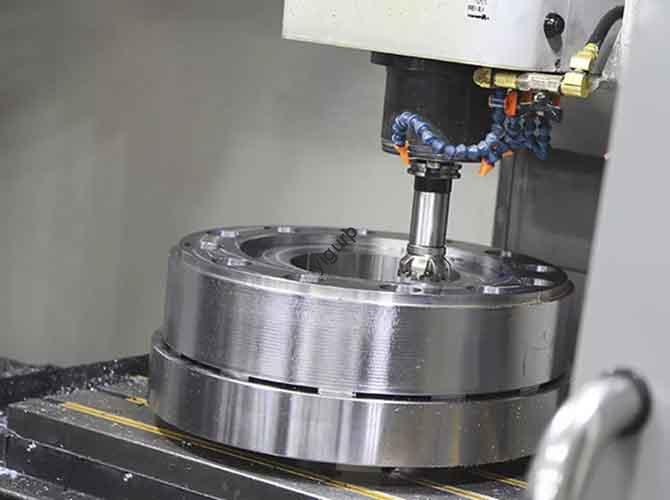In the fast-paced manufacturing world, how do you ensure consistent quality and high efficiency when producing electrodes? The answer lies in Electrode Processing CNC—a computer-controlled technology that has become a game-changer for industries like mold making, eletrônica, e aeroespacial. This article breaks down its core value, processo, and applications to help you solve common production challenges.
1. What Is Electrode Processing CNC?
Na sua essência, Electrode Processing CNC usa controle numérico do computador (CNC) systems to automate the machining of electrode materials (Por exemplo, cobre, grafite). Ao contrário dos métodos manuais tradicionais, it relies on pre-programmed code to control tool movement, ensuring every electrode meets exact design specs.
Key Advantages vs. Usinagem tradicional
| Recurso | Electrode Processing CNC | Usinagem manual tradicional |
|---|---|---|
| Precisão | ±0.001mm accuracy | ± 0,01 mm (depends on operator) |
| Eficiência | 3x mais rápido (24/7 operação) | Lento (requires breaks) |
| Consistência | 99% uniform output | 70-80% (operator-dependent) |
| Manipulação de complexidade | Handles 3D/intricate designs | Limitado a formas simples |
2. Step-by-Step Electrode Processing CNC Workflow
Wondering how to implement this technology in your workshop? Follow this linear, actionable process:
- Projeto & Programação: Use o software CAD (Por exemplo, AutoCAD, SolidWorks) to create the electrode’s 3D model. Convert the model into G-code (CNC machine language) usando o software CAM.
- Configuração do material: Secure the electrode material (Por exemplo, graphite block) onto the CNC machine’s worktable. Calibrate tools (Por exemplo, Mills finais) for cutting/engraving.
- Usinagem automatizada: Load the G-code into the CNC system. The machine will automatically control tool speed (5,000-20,000 RPM) and trajectory to shape the electrode.
- Pós-processamento: Clean the electrode with ultrasonic cleaners to remove debris. Deburr edges using precision files or laser tools to ensure smoothness.
- Verificação de qualidade: Use uma máquina de medição de coordenadas (Cmm) to verify dimensions—critical for mold manufacturing, where even tiny errors ruin batches.
3. Principais aplicações: Where Electrode Processing CNC Shines
Why is this technology indispensable? Let’s look at real-world use cases:
- Mold Manufacturing: Moldes para peças plásticas (Por exemplo, Casos de telefone) require electrodes to create detailed cavities. CNC-machined electrodes ensure 100% mold consistency, reducing defect rates by 40%.
- Indústria eletrônica: Electrodes for semiconductor chips need micro-level precision. CNC systems handle 0.1mm-wide grooves—impossible with manual tools.
- Aeroespacial: Titanium alloy electrodes for engine parts demand high strength and accuracy. CNC machining maintains tight tolerances, even for large components.
4. Latest Innovations in Electrode Processing CNC
À medida que a tecnologia avança, how is CNC evolving to solve new challenges? Here are two key upgrades:
- Smart CNC Systems: New models (Por exemplo, Fanuc 30i-B) have AI-powered error detection. They can adjust tool paths in real time if material density varies—cutting waste by 25%.
- 5-Usinagem do eixo: Traditional 3-axis CNC limits movement; 5-axis systems rotate the tool and worktable, enabling complex shapes (Por exemplo, curved electrodes for medical devices) in one setup.
5. Perspectiva da tecnologia YIGU
Na tecnologia Yigu, acreditamosElectrode Processing CNC is not just a tool—it’s a catalyst for manufacturing innovation. Our clients in mold and electronics industries have seen 35% faster production cycles and 50% fewer reworks after adopting our CNC-integrated solutions. We prioritize user-friendly programming and after-sales support, ensuring even small workshops can leverage high-precision machining.
Perguntas frequentes
- P: What materials work best with Electrode Processing CNC?UM: Cobre (alta condutividade) and graphite (usinagem rápida) são mais comuns. CNC systems also handle aluminum and titanium for specialized aerospace/medical parts.
- P: How much does an Electrode Processing CNC machine cost?UM: Entry-level 3-axis machines start at $50,000; high-end 5-axis models for complex work cost $200,000+. Yigu offers flexible leasing options for small businesses.
- P: Do I need skilled operators to run CNC electrode machining?UM: Basic training (2-4 semanas) is enough for programming and operation. Yigu provides free on-site training with machine purchases to reduce setup time.
